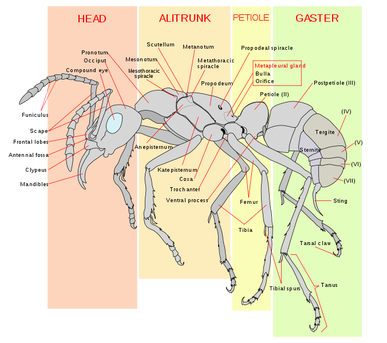
We have known for a long time that ants deposit pheromones as they travel. These are meant to identify trails and in some cases, are used to confuse other ants from a different colony. Ants are very territorial and will kill non-member ants. But, according to the new evidence, these ants also use visual cues for location and polarized sunlight as a compass. These researchers also report that ants "count their steps" to return to the buried ground nest location. All that I can picture is ants with little pedometers strapped to their legs to do the count. But seriously, from behavior that I have seen, ants seem to meander and have a bizarre patterns of movement. I find that the counting idea somewhat implausible, but you can judge for yourself after reading the article.
But, the observations that ants also use magnetic field information, vibration, and carbon dioxide from their nest-mates to locate home, really piqued my interest. I have often wondered if ants had the same magnetotactic qualities as say, some bacteria. I was not surprised at the use of vibration as a sensor, but how much vibration does an ant nest generate? The idea of carbon dioxide was not a shock either as I have experimented with CO2 and mosquitoes. The results were mixed and mosquito attraction to humans is much more complicated.
But, I see some experiments to do this summer as other people are trying to keep them out of their lives. I will be inviting them in to participate in some test apparatus possibilities. I would like to determine if the ants can be
convinced to change direction by a change in magnetic field. A simple setup with a magnifying glass should be adequate to watch them. And, can they be fed some iron rich food and maybe synthesize magnetite (Fe3O4)? Or, do they already possess this already or another form of iron? Here is a link to the article. Although they are omnivores, I hope that they are not anemic...Stay tuned!
 RSS Feed
RSS Feed
